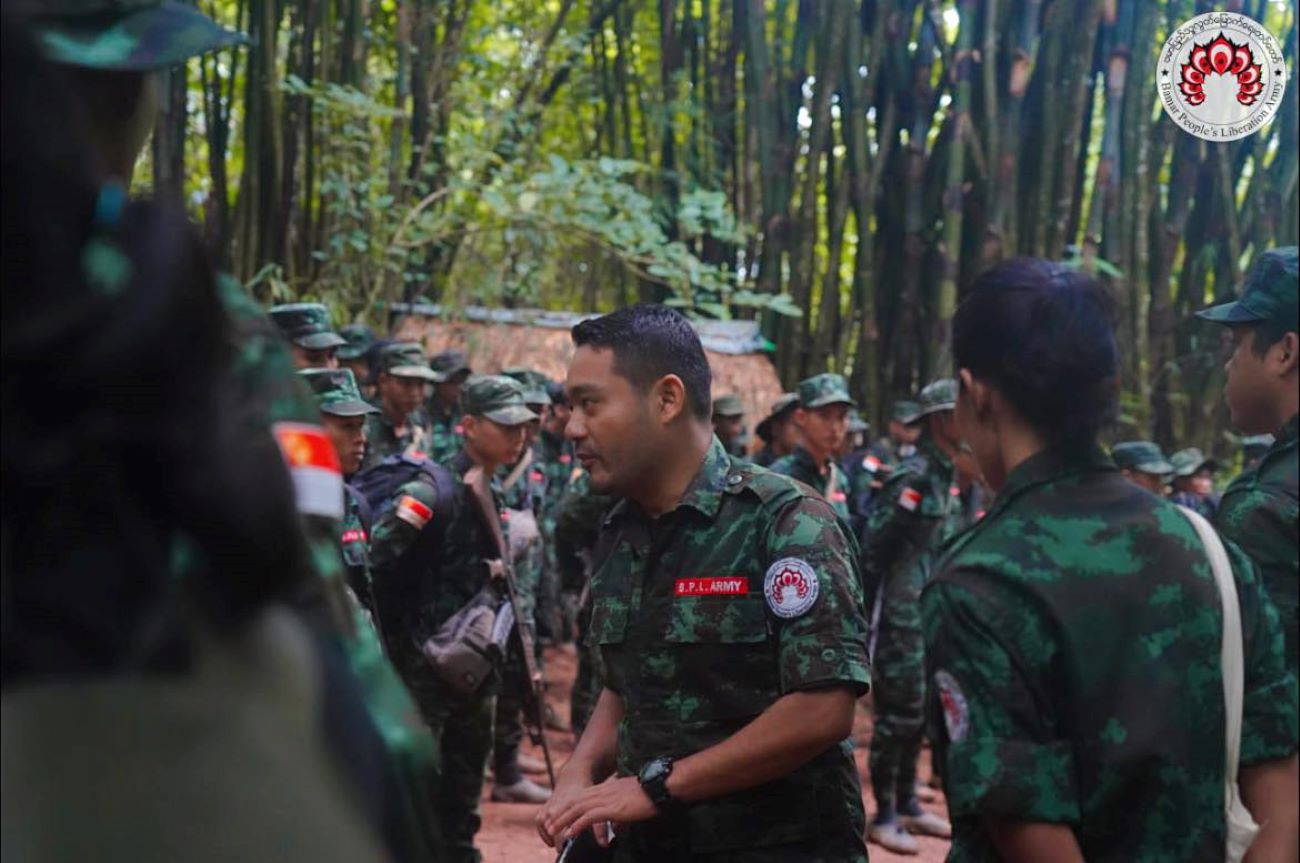CNI News
17 May 2025
In the current context of the Burmese revolution, questions have been raised about why the Myanmar Tatmadaw and other armed groups, including the Ethnic Armed Organizations (EAOs), want to seize Sagaing Region.
Sagaing Region is the largest of the seven regions and is surrounded by Magway Region, Mandalay Region, Shan State, Kachin State, India, and Chin State.
Since Myanmar gained independence, most politicians have been in Sagaing Region and that both sides want the region because jewels can be extracted there, Sai Htay Aung, chairman of the Tai Leng (Shanni) Nationalities Development Party (TNDP), told CNI News.
" The reason why they want to take Sagaing Region is because jewels including metals, gold, and uranium that are used in producing nuclear energy can be extracted there in Sagaing Region. It is designated as a Gold Region under the SLORC and the SPDC. In addition, initially, irrigated agriculture did not exist in Sagaing Region, but it became quite successful during the SLORC era,” he said.
The political forces and armed groups that participated in the Spring Revolution have formed the Sagaing Forum to bring about the end of authoritarianism, the right to self-determination and self-administration, and the emergence of a federal system.

The KIA/PDF joint force
There are political activities like the Sagaing Forum and that ethnic groups are not prioritizing Sagaing Region, but are carrying out military operations to protect their regions, the Pa-O National Liberation Organization (PNLO-NCA/S) Chairman Colonel Khun Okkar told CNI News.
"Kachin EAO can conduct military operations in Sagaing Region and reduce military attacks in Kachin State. In the same way, the Chin and Rakhine armed groups can do the same. So, Sagaing Region is not a priority for various ethnic groups. However, they can take part in military activities. "However, there are still some tasks that Sagaing itself needs to do. Some have acknowledged the Sagaing Forums and discussions took place. So, they are Sagaing Forum and the political model. In some way, it is the Sagaing constitution," he said.
Sagaing Region is known to have natural resources such as gas, oil, precious stone, gold, copper, timber, white gold, chromite, platinum, coal, iron, and rare earth metals.
The central government does not have full direct authority over Sagaing Region, but it is within Myanmar's borders and is already under the central government's jurisdiction under the constitution, U Thein Tun Oo, director of the Thayninga Institute for Strategic Studies, told CNI News.

The BPLA
"Although the central government does not have full power in Sagaing Region, it is still within the borders of Myanmar. In other words, Sagaing Region is under the current 2008 Constitution of Myanmar. So, according to the constitution, Sagaing Region is under the central government's jurisdiction." he said.
Within Sagaing Region, there are the NSCN (at least 6 Naga armed groups), the Shanni Nationalities Army (SNA), the Meitei People's Army (MPA), the Kachin Independence Army (KIA), the Arakan Army (AA), the All Burma Students Democratic Front (ABSDF), and the Karen National Union (KNU).
In addition, there are the Chin National Front (CNF), Zomi Revolutionary Army (ZRA/ZRO), Kuki National Army-Burma (KNA-B), People's Defense Forces (PDFs) under NUG,
Burma National Revolutionary Army (BNRA), People's Liberation Army (PLA-Communist), 96 Soldiers (led by Ko Zeyar Lwin), CNDF (Chin ethnic group), Local Defense Forces (LPDFs), etc.
In the same way, there are militia forces and Pyu Saw Htee forces (Pa Sa Hta) under the Myanmar Tatmadaw in the region as well.




